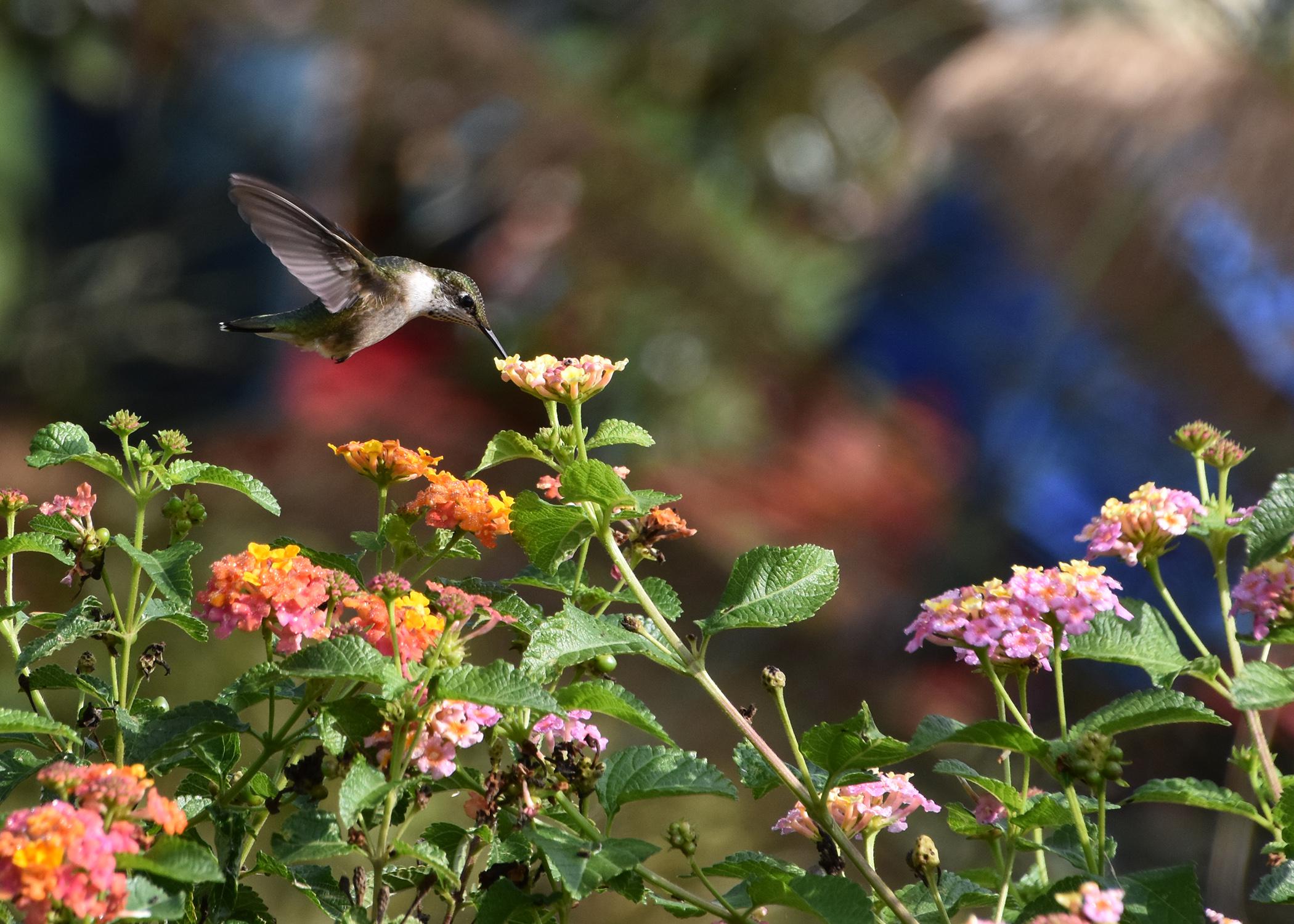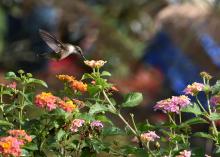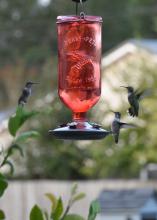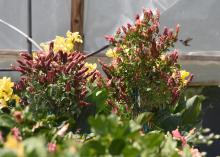Information Possibly Outdated
The information presented on this page was originally released on March 21, 2022. It may not be outdated, but please search our site for more current information. If you plan to quote or reference this information in a publication, please check with the Extension specialist or author before proceeding.
Select plants to attract migrant hummingbirds
It is officially spring, so we can start to get serious about our gardens and landscapes. But this is also the time we enjoy the annual, northward migration of hummingbirds.
That means we need to start thinking about plants that will attract hummingbirds to our landscapes.
Every spring, I get asked what kinds of plants a person should grow to attract these visitors to the garden. Flower shape is important, and by far, plants with tubular flowers are most important. Tubular flowers have the characteristic of being able to hold quite a bit of nectar.
This is part of Mother Nature’s grand plan. Nectar is simply sugar water produced by the plant, and it can be thought of as an energy drink for hummingbirds. As hummingbirds use their bills to probe for nectar, they pick up pollen and transfer it to the next flower visited.
Here are some of my favorite plants with tubular flowers that attract hummingbirds to my landscape. These will also work for your Mississippi gardens.
Lantana produces clusters of small, individual flowers that hummingbirds absolutely love. It is available in a wide variety of color combinations that will look great in your landscape.
Salvia is also a hummingbird magnet, and it has the distinction of being one of my garden landscape must-haves. Both the annual and perennial salvia selections have a wide range of tubular flowers that hummingbirds love.
The big flower heads of pentas have the power to draw hummingbirds to your yard. Clusters of small, individual, five-petal flowers cover these plants all summer long.
Probably my all-time favorite -- but really, aren’t they all my favorites? -- has to be Vermillionaire cuphea. This Mississippi Medallion winner produces abundant, fiery-hot yellow, red and orange tubular flowers all over the entire plant, making a mound of blooms all summer long. Hummingbird love them.
There are times when the landscape is not producing many flowers and it’s beneficial to have hummingbird feeders hanging in the garden. There are many types and styles of feeders from which to choose. The feeder selection is up to the individual gardener, but there is only one kind of food for hummingbirds.
You can buy premixed food, but it’s really easy to make your own. All you need to do is mix four parts of water with one part of white sugar. Bring it to a boil and allow to cool before filling your feeders.
Some people think using honey or brown sugar would be a healthier choice, but these sugar sources can be harmful to the hummingbirds. Be sure to change the sugar solution every two or three days to avoid any bacterial growth that can occur in the feeders.
I love watching hummingbirds work a group of flowers as they seemingly float up and down, back and forth as they feed. Consider planting some plants specifically to attract these little garden visitors and enjoy them with me.





